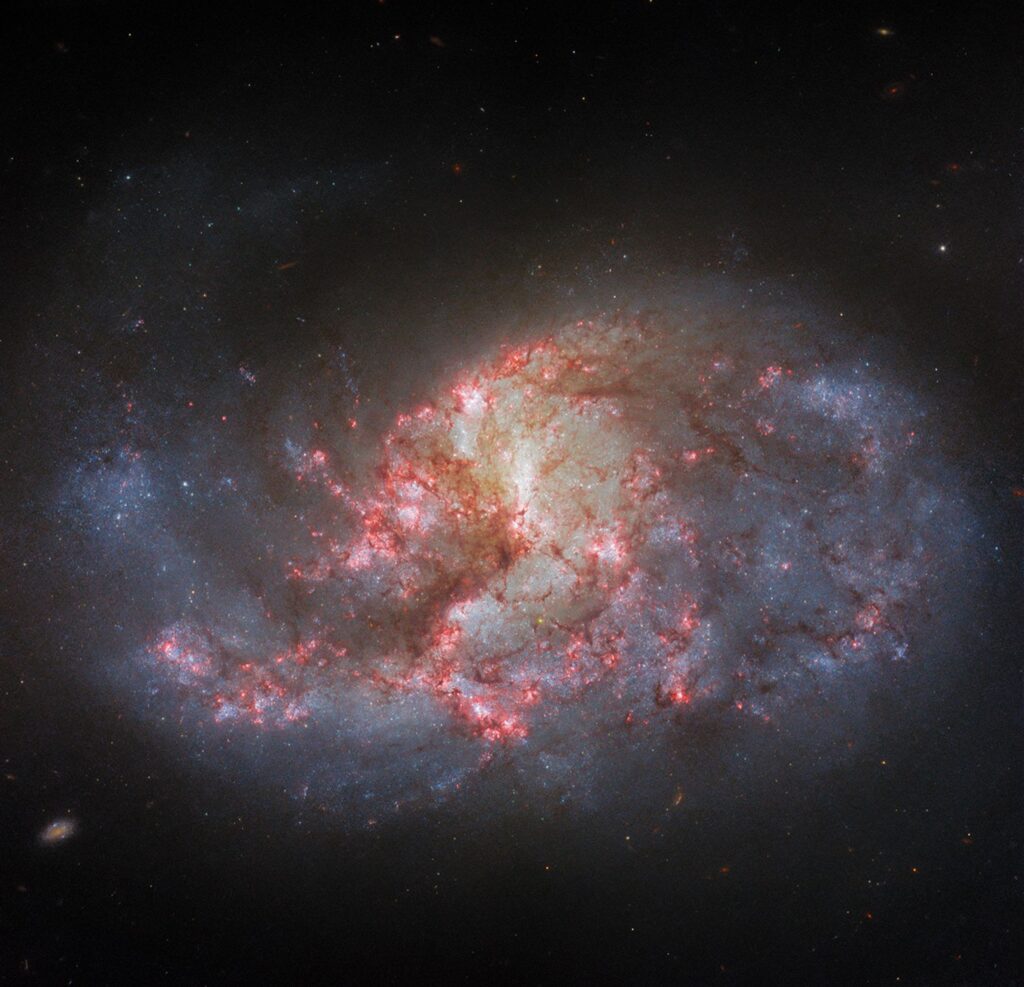The search for traces of life on distant planets will be more difficult for the world’s largest radio telescope, the Square Kilometer Array Observatory (SKAO), because of interference from SpaceX’s Starlink and other megaconstellation satellites.
Also affected will be the hunt for exoplanets and the study of the most distant galaxies, Federico di Vruno, radio spectrum manager at SKAO, told Space.com.
Radio astronomy observatories such as SKAO use vast arrays of antennas to listen to weak radio signals emitted by stars, galaxies and planets in the universe. These radio signals can travel on the same wavelengths that humans use for cellular telephony, terrestrial radio and TV transmissions and wireless internet. For this reason, radio observatories have for decades sought the most remote locations on Earth to install their sensitive equipment.
Once complete, SKAO will consist of two arrays sprawling over sparsely populated areas in Western Australia and South Africa. These regions are even protected by their respective governments as radio-quiet zones. That means no cell phones, terrestrial radio or TV for the few residents living in those areas as well as those visiting the sites.
Related: Epic radio images give most-detailed views of distant galaxies
What astronomers didn’t foresee when they started planning SKAO in the 1990s was the arrival of internet beaming megaconstellations, such as SpaceX’s Starlink broadband internet constellation.
Di Vruno explained that while SKAO will take advantage of protected radio-frequency bands that no one else can use, there are many astronomical objects that emit signals in bands that are used by humans on Earth, hence the need for the most remote and protected locations.
The band between 10.7 and 12.7 gigahertz, used by Starlink satellites to beam internet to user terminals on the ground, plays a role in answering some of the most fascinating astronomical questions.
“This band covers certain types of observations including when we are looking for certain molecules in space that are the precursors of life,” also known as biosignatures, di Vruno said. “Also, the search for and study of exoplanets is done in this band. The radio signals coming from some of the most distant galaxies can also get redshifted into this band. So [the megaconstellation] interference will affect our ability to see back in time and study certain epochs.”

The satellites will not blind SKAO in those frequency bands completely, di Vruno added. But with the growing number of satellites in orbit, there will be more and more background noise to contend with.
Since 2019, SpaceX, which owns and operates the Starlink megaconstellation, has launched around 2,000 satellites. That’s only about one-sixth of its planned first-generation constellation. By the time SKAO comes online around 2025, there may be many more as SpaceX already has permission to launch 42,000 spacecraft.
“We have looked at the effects for single-dish antennas and we found that they will need 30% more time to reach the same sensitivity,” di Vruno said. “But it also depends on how many satellites are up there, and that changes every day. The more satellites, the harder it will be to do observations in those frequency ranges.”
While the use of cell phones, terrestrial TV and radio is strictly limited in the radio-quiet zones where SKAO resides, satellites are exempt from these restrictions as they are governed by international regulations, di Vruno explained. In practice, residents won’t be allowed to use Starlink terminals near the arrays, but the satellites will still be beaming their disruptive signals.
“We are trying to have conversations with megaconstellation operators to argue that if there will not be receivers near the radio telescopes that perhaps they could do something not to point those beams directly at us,” di Vruno said. “There will be no one to receive the signal anyway.”
Di Vruno admits that SKAO has to “put significant resources” into protection against megaconstellation interference, although the exact amount cannot be quantified. The observatory plans to hire more experts as it looks into approaches to lessen the impact on observations.
“There are many things that can be done but they always come at some cost,” di Vruno said. “We already plan to schedule observations to avoid pointing where the satellites are but that’s changing a lot [as the satellites move and there are many of them] and is getting more difficult. We also plan to post-process our data and mask out the radio frequency interference but that also means losing data.”
SKAO is not the only astronomical research facility that has voiced concerns about megaconstellations. Since the launch of the first batch of Starlink satellites, the possible impact of the new technology on the future of ground-based research of the universe has become a hot topic among astronomers.
Astronomers developing the Vera Rubin Observatory, a wide field of view telescope that is currently being built in Chile, expect to see Starlink satellite trails in nearly all twilight images taken by the telescope, according to a report published in May 2020. Simulations revealed that once all of the 42,000 satellites planned by SpaceX are in orbit, up to 30% of Vera Rubin images will have at least one satellite streak in them.
Related stories:
A recent study by the Zwicky Transient Facility in California found the observatory’s hunt for near-Earth asteroids coming from the direction of the sun will suffer as a result of the Starlink megaconstellation’s operation. These potentially dangerous asteroids can only be spotted around sunrise and sunset, when the Starlink satellites are also the most visible due to the position of their orbits with respect to the sun and Earth during that part of the day.
A report by the American Astronomical Society (ASS) released in October 2022 likened the impact of megaconstellations on astronomy to light pollution. The report said the sky may brighten by a factor of two to three due to diffuse reflection of sunlight off the spacecraft.
Follow Tereza Pultarova on Twitter @TerezaPultarova Follow us on Twitter @Spacedotcom and on Facebook.


